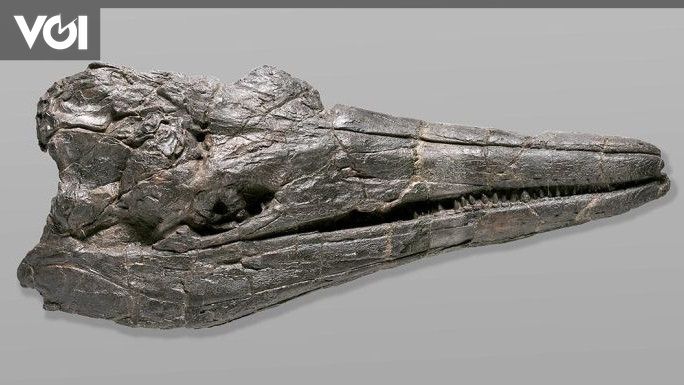JAKARTA – The discovery of the skull of a giant marine reptile in the United States has revealed a new theory about the speed of evolution and how fast the process can produce diversity.
The fossil of a giant ichthyosaur, with a skull measuring nearly two meters (6.6 ft) in length, estimated to be more than 17 meters (55.7 ft) long and weighing 45 tonnes, was found in Nevada.
Ichthyosaurs were large, extinct marine reptiles that dominated the oceans more than 200 million years ago. Analysis of the skull of this particular ichthyosaur fossil has revealed a new species, Cymbospondylus youngorum.
The skull analysis is part of a larger research effort by an international team to understand how quickly body size evolved in ichthyosaurs compared to the evolution of whales, another group of four-legged land vertebrates that originally came back to life in the sea, such as the ichthyosaurs.
“Ichthyosaurs reached giant sizes in a very short time, evolutionarily—only about 3 million years. By comparison, whales took about 45 million years to reach their largest body size,” Lars Schmitz, professor of biology in the WM Keck Department of Science, said. the joint science department for the Claremont McKenna, Pitzer and Scripps colleges in Claremont, California said in a press release, citing CNN December 23.
Schmitz is part of the team that has been researching the fossil.
“What these fossil discoveries show is, if the ecological conditions are right and there is a certain amount of environmental stability, evolution can proceed very quickly,” he explained.
Schmitz worked with an international team of researchers to analyze fossils, identify ichthyosaurs as new species, create phylogenetic trees, diagrams showing evolutionary relationships among various biological species, and then lead a computational analysis comparing the speed and type of body size evolution in ichthyosaurs to whales.
Cymbospondylus youngorum was part of a group of reptiles that returned to the sea during the Triassic Period, the beginning of the dinosaur age, and were fully adapted to marine life. Schmitz described it as a ‘fish lizard.’
Ichthyosaur fossils found in Nevada, which include a preserved skull, shoulders and arms similar to flippers, were found in rocks that have preserved cross-sections of fauna that existed some five million years after the “Big Death”. It happened about 252 million years ago, when 81 percent of the world’s marine life became extinct.
When the skull was found, the research team was initially unsure how an animal of this size could have evolved and survived so quickly after Earth’s most severe extinction event.
“The oceans of that period were very different from our modern oceans. The modern marine ecosystems that feed today’s whales consist of very large plankton, which were not present when Cymbospondylus youngorum existed. We found giant ichthyosaurs that once lived in an era when the oceans were thought to be incapacitated. support such a large animal,” he explained.
To note, these findings provide Schmitz and his research team with new insights into how fast evolution can occur and lead to diversity.
“This fossil is an example of how fast evolution can produce diversity. You can go from zero to 100 in a few million years, which is very fast in terms of evolution.” The research was published in the journal ‘Science‘ on Thursday 23 December.
– .


